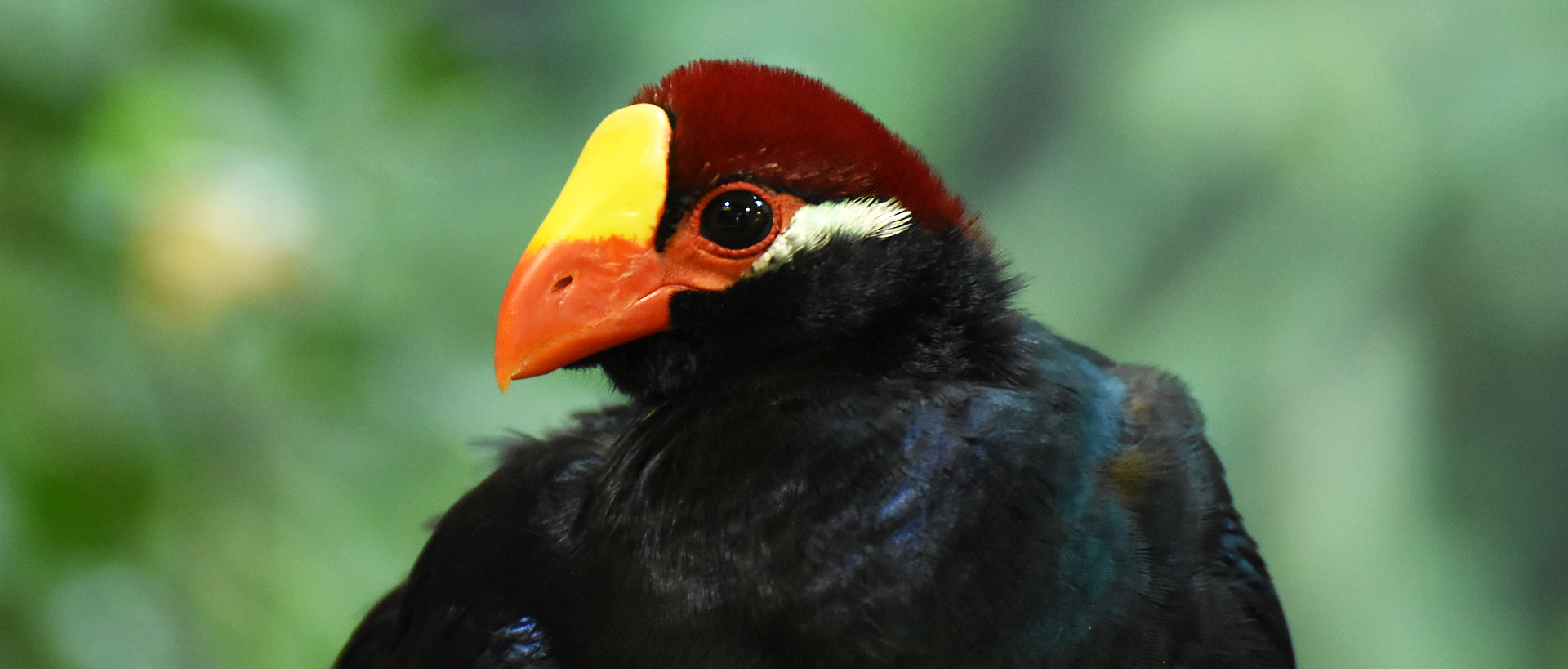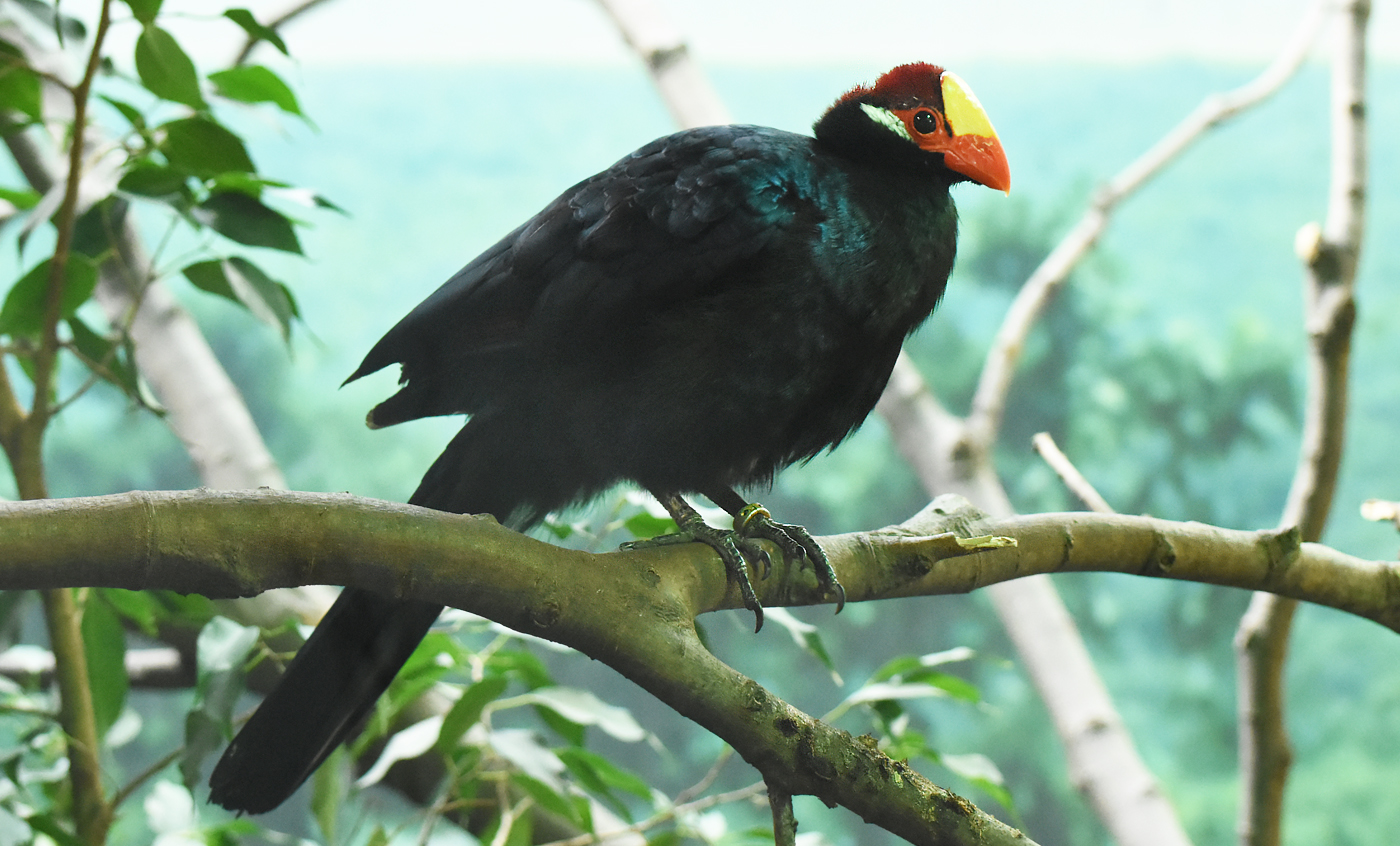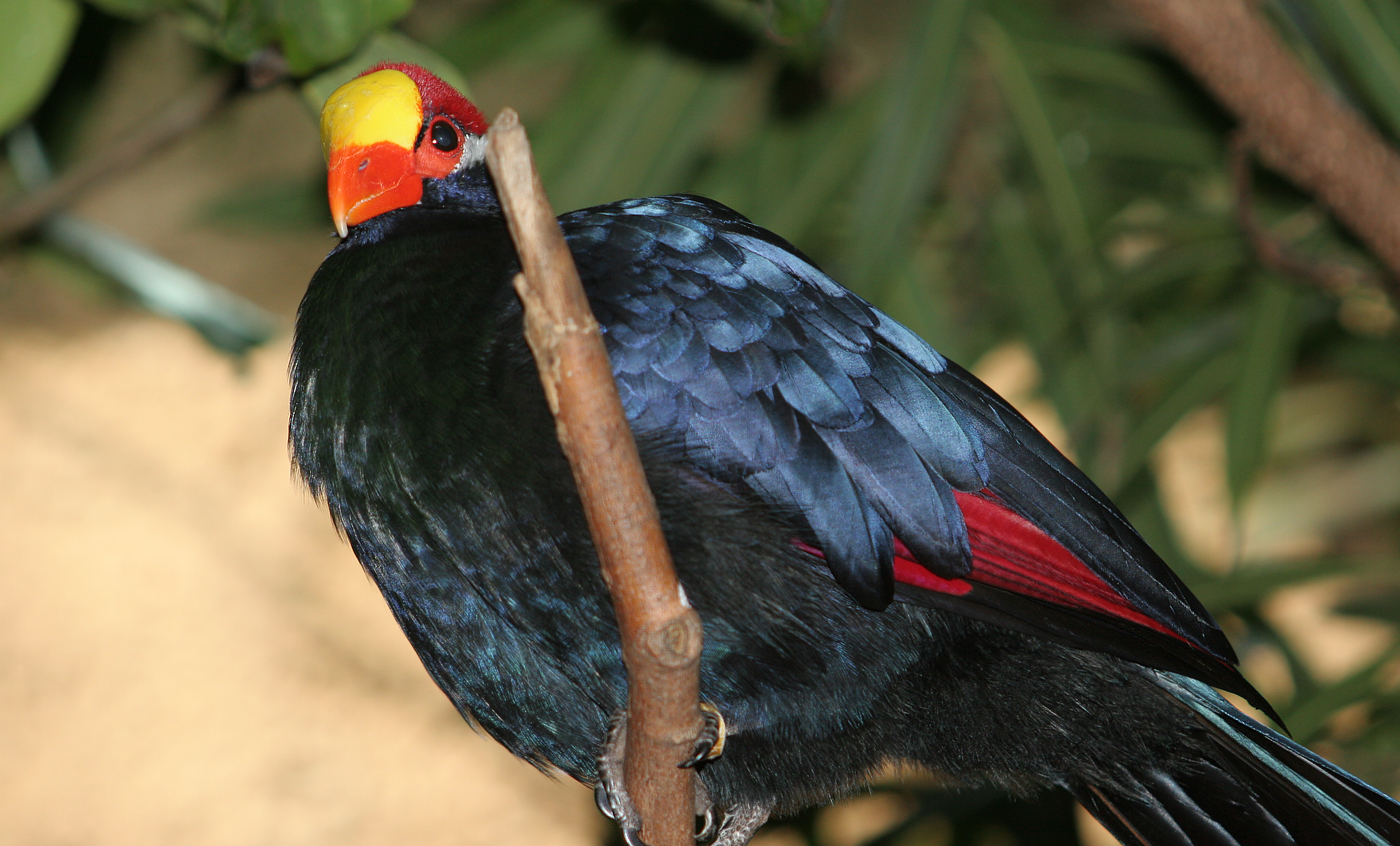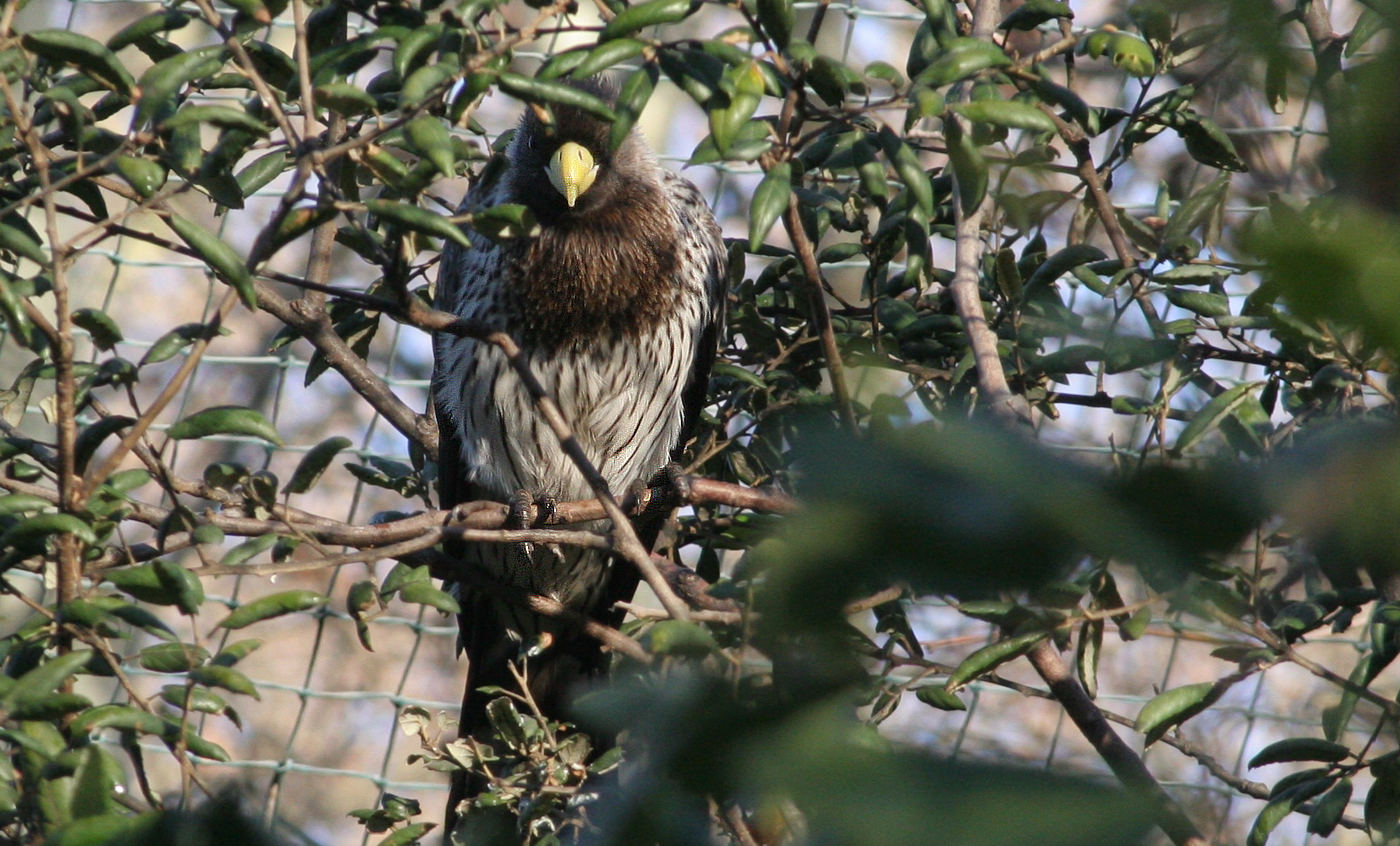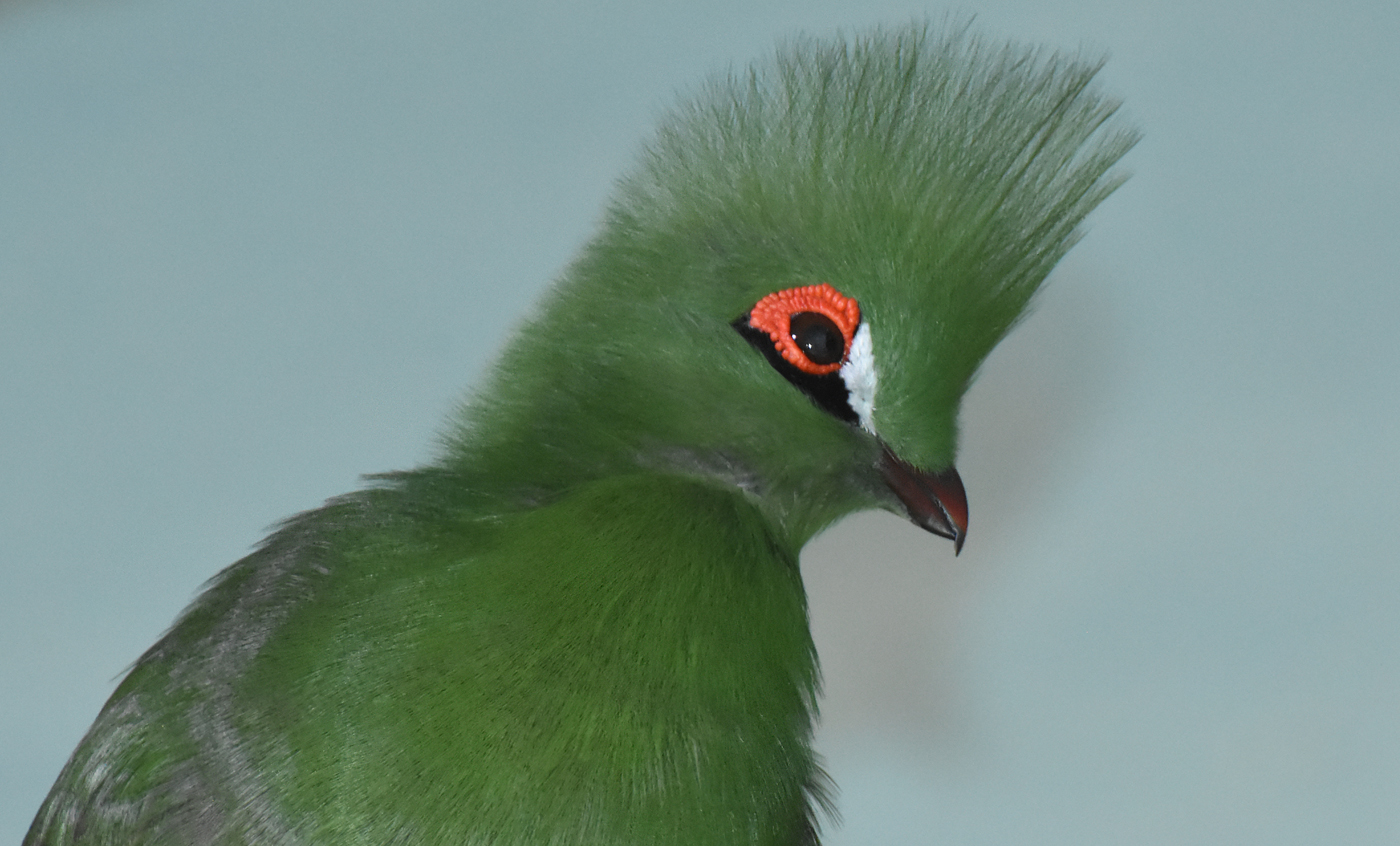Violet turaco
Turacos are eye-catching jungle birds that are only found on the African continent. As a unique trait to this family, the plumage has two pigments that do not exist in any other bird: turacine (a red colour) and turacoverdin (a green colour). However, the violet turaco, or plantain-eater, is characterised by the general violet colour of its plumage, with an orange beak, a yellow forehead and a red crest.
Breeding program
Natural habit
Jungles between Gambia and Nigeria.
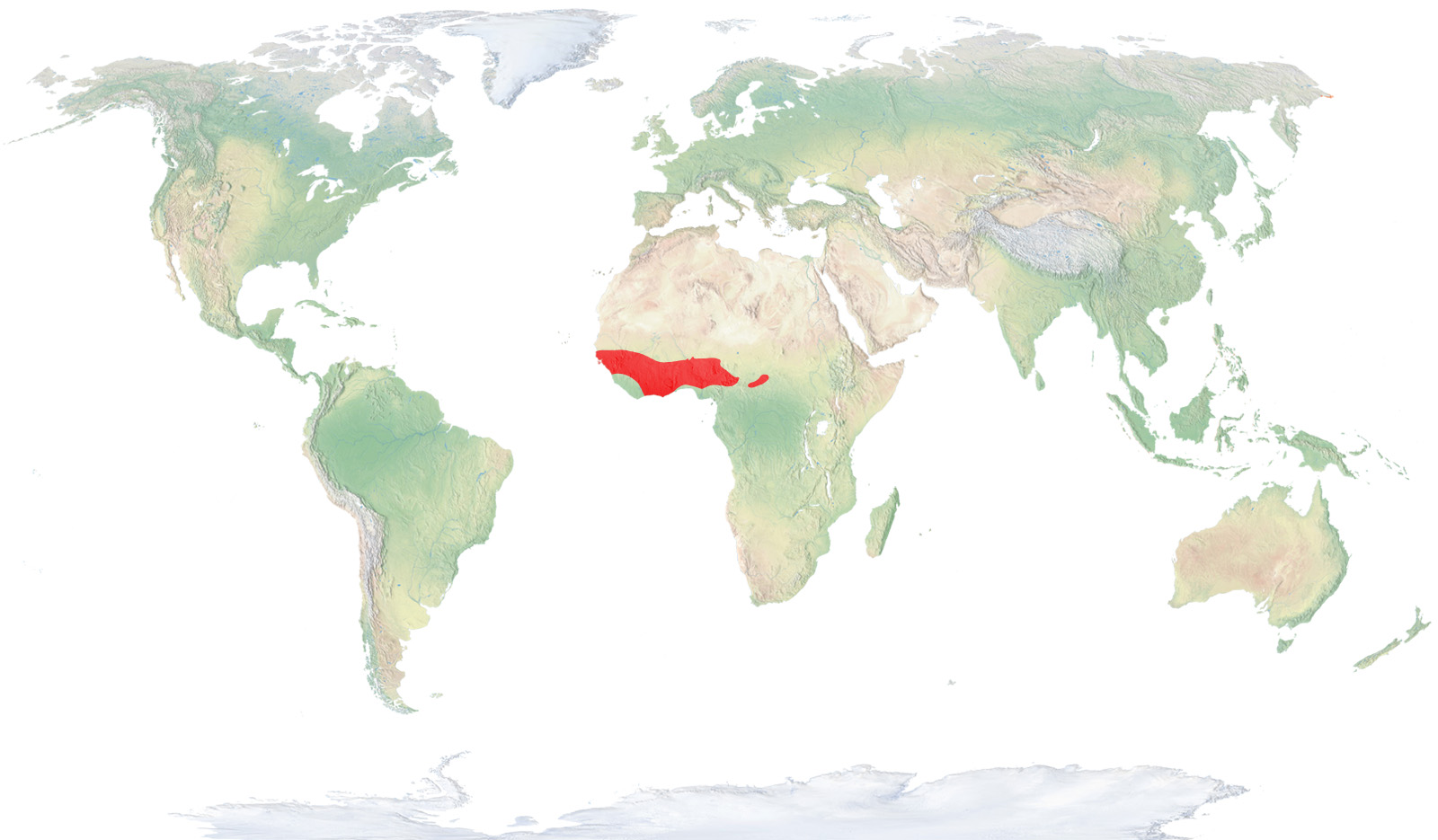
- Distribution / Resident
- Breeding
- Wintering
- Subspecies
Risk level
- Extint
- Extint in the wild
- Critically endangered
- In Danger
- Vulnerable
- Near threatened
- Minor concern
- Insufficient data
- Not evaluated
Taxonomy
Physical characteristics
Biology
Reproduction
Biology
Turacos are eye-catching jungle birds that are only found on the African continent. As a unique trait to this family, the plumage has two pigments that do not exist in any other bird: turacine (a red colour) and turacoverdin (a green colour). However, the violet turaco, or plantain-eater, is characterised by the general violet colour of its plumage, with an orange beak, a yellow forehead and a red crest.
The violet turaco only lives in the jungles of West Africa, from southern Senegal to the Ivory Coast, Sierra Leone, Liberia and Nigeria, with small isolated populations in southern Chad and the north of the Central African Republic.
Almost exclusively frugivorous, even when they are chicks, they form small groups to feed together in the same jungle area..
The breeding season starts around April, especially in Senegal and Gambia, while in Nigeria it is between June and October. It builds its nest with twigs and small branches similar to those of Colimbidae, normally in trees some six metres from the ground with dense leaves and good arboreal coverage, in which it lays two white eggs that both members of the pair incubate for 25 or 26 days
It is probably a sedentary species, although some populations must move to disperse for variable periods of time, although it cannot be considered migratory in any way.
Like all jungle birds, it is endangered today mainly because of the deforestation of its habitat. In countries like Guinea, Sierra Leone, Liberia and Ghana, they are highly sought after for illegal pet trafficking.
The Barcelona Zoo participates in the European Studbook (ESB) for this species in captivity.



